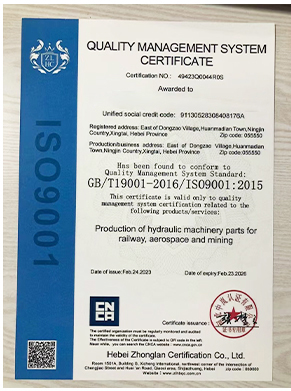- Arabic
- French
- Russian
- Spanish
- Portuguese
- Turkish
- Armenian
- English
- Albanian
- Amharic
- Azerbaijani
- Basque
- Belarusian
- Bengali
- Bosnian
- Bulgarian
- Catalan
- Cebuano
- Corsican
- Croatian
- Czech
- Danish
- Dutch
- Afrikaans
- Esperanto
- Estonian
- Finnish
- Frisian
- Galician
- Georgian
- German
- Greek
- Gujarati
- Haitian Creole
- hausa
- hawaiian
- Hebrew
- Hindi
- Miao
- Hungarian
- Icelandic
- igbo
- Indonesian
- irish
- Italian
- Japanese
- Javanese
- Kannada
- kazakh
- Khmer
- Rwandese
- Korean
- Kurdish
- Kyrgyz
- Lao
- Latin
- Latvian
- Lithuanian
- Luxembourgish
- Macedonian
- Malgashi
- Malay
- Malayalam
- Maltese
- Maori
- Marathi
- Mongolian
- Myanmar
- Nepali
- Norwegian
- Norwegian
- Occitan
- Pashto
- Persian
- Polish
- Punjabi
- Romanian
- Samoan
- Scottish Gaelic
- Serbian
- Sesotho
- Shona
- Sindhi
- Sinhala
- Slovak
- Slovenian
- Somali
- Sundanese
- Swahili
- Swedish
- Tagalog
- Tajik
- Tamil
- Tatar
- Telugu
- Thai
- Turkmen
- Ukrainian
- Urdu
- Uighur
- Uzbek
- Vietnamese
- Welsh
- Bantu
- Yiddish
- Yoruba
- Zulu
9-р сар . 02, 2024 03:13 Back to list
Flat Leather Drive Belt - Durable & Efficient Power Transmission
The Importance of Flat Leather Drive Belts in Mechanical Systems
Flat leather drive belts have been a fundamental component in mechanical systems for centuries. Their unique blend of flexibility, strength, and durability makes them an ideal choice for various applications, from traditional machinery to modern production lines. In this article, we will explore the significance of flat leather drive belts, their construction, advantages, and the role they play in different industries.
Construction and Composition
Flat leather drive belts are typically made from high-quality leather that is treated to enhance its strength and resistance to wear. The leather is usually woven tightly to create a smooth surface that minimizes friction during operation. The thickness and width of the belt can vary depending on its specific application, ensuring that it can handle the required torque and speed of the machinery it drives.
One of the notable features of leather is its natural elasticity. This characteristic allows the belt to stretch slightly under load without compromising its integrity. This elasticity ensures that the belt maintains a tight grip on pulleys and gears, preventing slippage that can lead to inefficiencies and mechanical failure.
Advantages of Flat Leather Drive Belts
1. Durability Leather is known for its strength and long life. Flat leather drive belts can withstand significant wear and tear, making them ideal for high-stress environments such as factories and workshops.
2. Flexibility The natural attributes of leather allow for easy maneuvering around pulleys and other mechanical components. This flexibility makes installation and maintenance simpler, as the belts can be easily adjusted to fit various applications.
flat leather drive belt

3. Chemical Resistance Leather is resistant to many chemicals, oils, and other substances commonly found in industrial settings. This makes flat leather drive belts less likely to degrade over time compared to synthetic alternatives, ensuring longevity and reliability.
4. Low Noise Operation Compared to other materials, leather belts tend to operate more quietly. This is particularly advantageous in settings where noise reduction is essential, such as in residential areas or sensitive environments.
5. Eco-Friendliness As a natural product, leather is more environmentally friendly than many synthetic options. Moreover, its biodegradability makes it a sustainable choice for manufacturers looking to reduce their ecological footprint.
Applications Across Industries
Flat leather drive belts are used in a wide spectrum of industries, ranging from agriculture to manufacturing. In agricultural machinery, they drive equipment such as threshers and grain mills, efficiently transferring power from the engine to the operational components. In manufacturing, they can be found in conveyor systems, lathes, and other machinery where reliability and consistent performance are paramount.
Moreover, the crafting and textile industries also utilize flat leather belts for powering sewing machines and looms, facilitating the production of high-quality goods with precision. The adaptability of flat leather belts means they can be custom-made for specific machinery, ensuring optimal performance in diverse settings.
Conclusion
Flat leather drive belts are an integral part of many mechanical systems, providing a reliable and efficient means of power transmission. With their durability, flexibility, and eco-friendly nature, these belts are a practical choice across various industries. As technology continues to evolve, the timeless benefits of flat leather drive belts ensure their place in both historical and modern machinery, highlighting their enduring importance in the world of mechanics.
-
Korean Auto Parts Timing Belt 24312-37500 For Hyundai/Kia
NewsMar.07,2025
-
7PK2300 90916-T2024 RIBBED BELT POLY V BELT PK BELT
NewsMar.07,2025
-
Chinese Auto Belt Factory 310-2M-22 For BMW/Mercedes-Benz
NewsMar.07,2025
-
Chinese Auto Belt Factory 310-2M-22 For BMW/Mercedes-Benz
NewsMar.07,2025
-
90916-02660 PK Belt 6PK1680 For Toyota
NewsMar.07,2025
-
drive belt serpentine belt
NewsMar.07,2025

